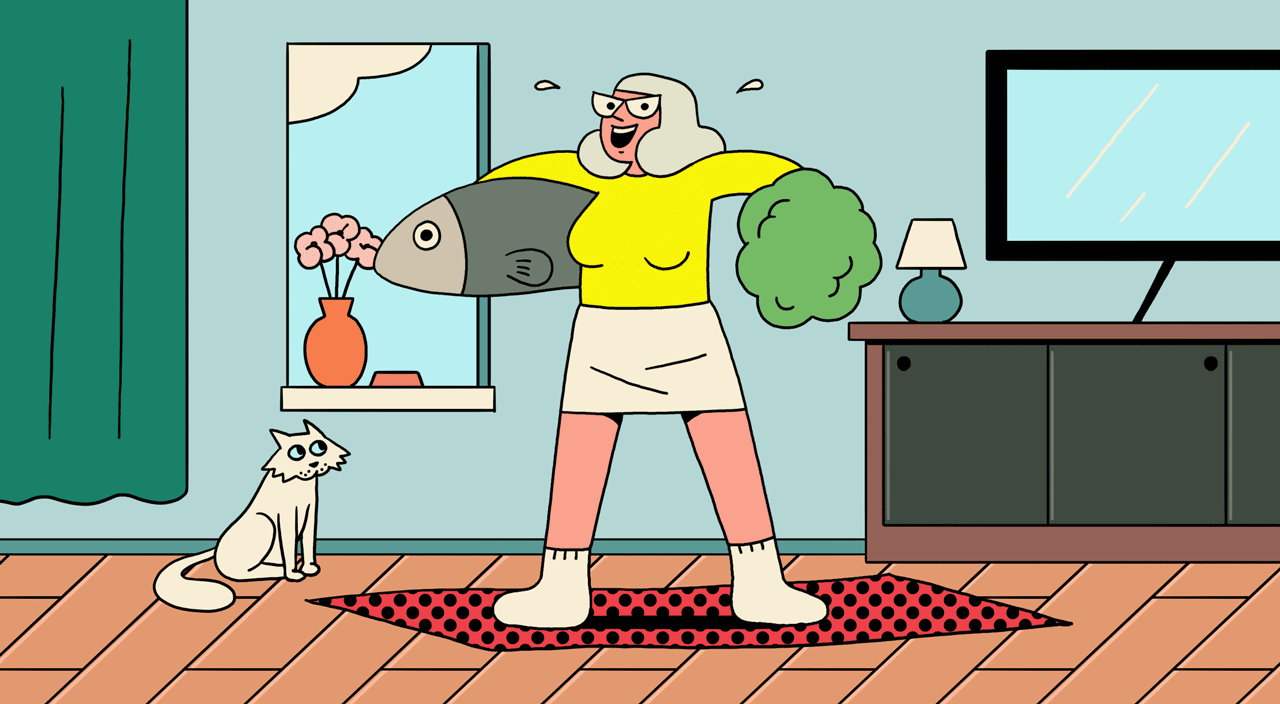My 96-year-old father has fallen three times in the past three months, which frightens my brothers and me. All of these incidents have taken place outside, in his uneven, rocky backyard, where he insists on walking without taking his cane. Amazingly, he hasn’t broken any bones, but his female companion, age 90, tripped outside and fractured her wrist.
And that pretty much illustrates the problem of bone strength as we age — balance issues make falls more likely and older women are at greater risk for osteoporosis — a condition that weakens bones and makes them porous and more likely to fracture or break after even a minor fall, according to the National Institute on Aging.
About 8 million women and 2 million men over the age of 50 in the U.S. have osteoporosis. One in 2 women — and up to 1 in 4 men — will break a bone due to the condition, according to the National Osteoporosis Foundation. Those with osteoporosis often don’t even realize they have it until they suffer a fracture.
For postmenopausal women, the loss of estrogen can be blamed for some of our bone fragility, but other culprits include our body’s decreased ability to absorb as much calcium as it did when we were younger, inadequate calcium or other nutrients in our diet and a lack of exercise, all of which can work to deplete bone mass.
Here are 5 ways we could naturally strengthen our bones:
- Learn from the astronauts: Eat more fish.
Astronauts who spend months being weightless in space lose an average 1 to 2 percent of their bone mass a month, similar to osteoporosis in a sedentary older adult. The loss happens because an astronaut’s pelvis, spine and legs are no longer supporting the body’s weight, which leads to fewer new bone cells being produced. Ongoing research by NASA and others is looking at ways to reduce this loss, but recent studies suggest that astronauts who eat more fish — a rich source of omega-3 fatty acids — experience less bone loss. Omega-3 oils may even protect against muscle loss, scientists suggest. For those of us who are earthbound, eating fish two to three times a week may help protect our bones from weakening as well.
- Eat more vegetables and fruits.
Fruits and vegetables are full of vitamins and minerals and eating more of them is linked in recent studies to increased bone density and a lower risk of osteoporosis. Dark green vegetables, in particular, are rich in minerals needed to help bones absorb calcium, and vitamin C from fruits may help protect bones from damage. A study published in 2017 in the journal PLOS One, found that of more than 3,000 older Chinese women and men, those who ate more fruits and vegetables — especially citrus fruits — had higher bone mineral density and less osteoporosis. Even more encouraging, a study of more than 1,000 Europeans from five countries, ages 65 to 79, found those with osteoporosis who were assigned to eat a Mediterranean-type diet for a year were able to increase hip bone density. The research, published in 2018 in the American Journal of Clinical Nutrition, reported that a diet rich in fruit, vegetables, nuts, olive oil and fish reduced bone loss within 12 months.
- Eat enough protein at each meal.
Our bones need protein, but older bodies are less efficient at using protein. “Eating sufficient protein” at each meal is important to provide the collagen for building bone structure, says bone health expert June McKoy, M.D., a professor of medicine and geriatrics at Northwestern University’s Feinberg School of Medicine. The key is to spread out protein evenly during the day, instead of eating one big high-protein meal at dinner. Older women should aim for 25 grams of protein at each meal — and that includes breakfast, the meal at which older adults tend to eat the least protein. For example, one cup of low-fat, plain Greek yogurt has about 24 grams of protein, a roasted chicken thigh has 32 grams, and a six-ounce Atlantic salmon filet has about 38 grams.
- Don’t overdo it with calcium supplements.
It’s so tempting to pop a calcium pill and feel like you’ve taken care of your bones for the day. Not so fast. Recent studies of these supplements have been mixed and at least one study found a link between calcium supplements and cardiovascular risk from excess calcium in heart blood vessels that could cause a blockage, says McKoy.
She recommends to her patients to try and get most of their calcium from their diet. The maximum amount of calcium our body can absorb at any given time is 500 milligrams, so you may not want to take your 500 mg supplement and your multivitamin together if the vitamin pill also contains calcium. Wait and take the vitamin with a later meal. “The more calcium you consume at any given time, the less calcium the body will absorb. In this case, less is more,” McKoy says.
- Exercise — but pick the right kind.
Bone is living tissue that responds to exercise like your muscles do and becomes stronger, says the National Institutes of Health. Here are some things to know:
- Weight-bearing activities — which use your bones to support your weight and hold you upright — are some of the best for building bone strength. They include walking, using the elliptical machine and dancing.
- Even two sessions weekly of strength training — using hand weights or resistance bands to strengthen muscles — can help improve bone density in postmenopausal women, a study published in 2017 in the journal BMC Geriatrics found. Just remember, says McKoy, “older adults should receive supervision if using weights and the program should be individually tailored [for older adults] to prevent harm.”
- If tests show you already have weakened bones, consult your doctor before doing any high-impact exercises that could lead to fractures. That means avoid jumping, stomping, running or jogging, as well as bending or twisting that could strain or increase the risk of spine fracture. Consider doing exercises for better balance, like tai chi, so you’re less likely to fall.








